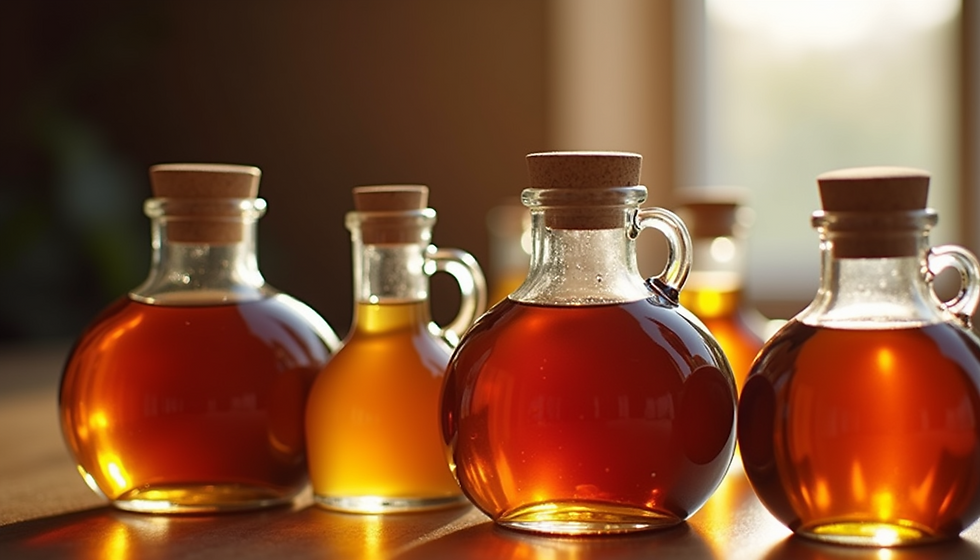Understanding Invasive Autumn Olive: Reasons and Methods for Effective Removal
- greydogmaplefarms
- Jul 6
- 3 min read
The Autumn Olive (Elaeagnus umbellata) was introduced to the United States in the 1830s as an ornamental plant and for soil stabilization. However, this once-beloved species has transformed into a troublesome invader. It grows rapidly and can thrive in numerous conditions, often pushing out native plants and causing ecological disruptions. This post will examine why it is essential to remove Autumn Olive and the most effective methods for its eradication.
The Ecological Impact of Autumn Olive
Autumn Olive poses a significant threat to local ecosystems. Its ability to outcompete native flora for limited resources, such as sunlight, nutrients, and space, has led to alarming declines in biodiversity. Some studies show that areas dominated by Autumn Olive can see a 50% reduction in native plant diversity. This loss can ripple through the food chain, affecting the animals that rely on native plants for nourishment and shelter.
Additionally, Autumn Olive can alter soil chemistry. By fixing nitrogen, it can make the soil more acidic, which is not conducive to many native plants that thrive in neutral soils. The result is a landscape where few dominant species persist while many others fade away. In areas overrun by Autumn Olive, local wildlife faces diminishing food sources, which can threaten their populations.

Reasons for Removing Autumn Olive
Removing Autumn Olive is crucial for restoring ecosystems and enhancing biodiversity. Here are several compelling reasons for its removal:
Biodiversity Preservation: Autumn Olive directly threatens native species, leading to imbalances in local ecosystems. For example, areas cleared of this invasive plant can witness a resurgence of native flora, which supports a wider array of fauna, including birds, insects, and mammals.
Improved Soil Health: Removing Autumn Olive allows for the reintroduction of native plants suited to local ecosystems, which can enhance soil quality. Research suggests that native plant restoration can improve soil organic matter content by up to 30%, benefiting overall soil health.
Aesthetic Value: In places where Autumn Olive has taken over, landscapes can become drab and uninviting. Removing it opens space for vibrant native plants, positively impacting the visual beauty of the environment, enhancing not just aesthetics but also property values.
Enhanced Water Quality: Invasive plants can disrupt local water systems. For instance, Autumn Olive's dense growth can lead to increased runoff and sedimentation in streams. By eliminating this plant, communities can protect aquatic habitats and improve water quality, ultimately benefiting local wildlife.
Effective Methods for Removing Autumn Olive
Removing Autumn Olive can be difficult due to its fast growth and extensive root system. Nevertheless, several effective techniques can ensure successful eradication:
Manual Removal
For small infestations, manual removal can prove effective. This method involves cutting the shrub down at ground level and carefully extracting the root system. It is critical to remove the roots since Autumn Olive can regrow from remaining fragments. In one study, consistent manual removal led to a 70% decrease in Autumn Olive density over three years.
While this method is eco-friendly, it is labor-intensive and may require repeat efforts. It is most suitable for areas where chemical treatments are not an option.
Chemical Control
For more extensive infestations, chemical removal may be necessary. Utilizing targeted herbicides can effectively kill Autumn Olive but should be approached with caution. It is crucial to choose selective herbicides that minimize harm to native plants. Research indicates that applying herbicides during peak growth periods can increase effectiveness by up to 75%.
Always adhere to local regulations and safety guidelines when using chemicals.
Prescribed Burning
In specific ecosystems, prescribed burning serves as an effective strategy to control invasive species like Autumn Olive. By destroying aboveground biomass, burning can promote the growth of suppressed native plants. A study from the U.S. Forest Service noted that prescribed fire reduced Autumn Olive populations by 60% in treated areas, allowing for a revitalization of local flora.
Partner with local fire management professionals to ensure that prescribed burning is conducted safely and legally.
Ongoing Monitoring
Regardless of the removal method, ongoing monitoring is essential to prevent regrowth. Autumn Olive seeds can remain viable in the soil for years, so regular checks are vital to catch any new sprouts early on. Implementing a maintenance plan with seasonal checks can effectively address new growth, and involving local community members can enhance monitoring efforts.
Final Thoughts
Recognizing the ecological consequences and the necessity of removing invasive Autumn Olive is vital for healthy ecosystems. While the process can be laborious, the advantages of restoring native plant life and improving biodiversity are immeasurable.
Whether you manage a small garden or a more extensive natural area, tackling Autumn Olive requires consistency and determination. By employing effective removal techniques and maintaining regular monitoring, we can reclaim our landscapes and encourage diverse native species to thrive again.






Comments